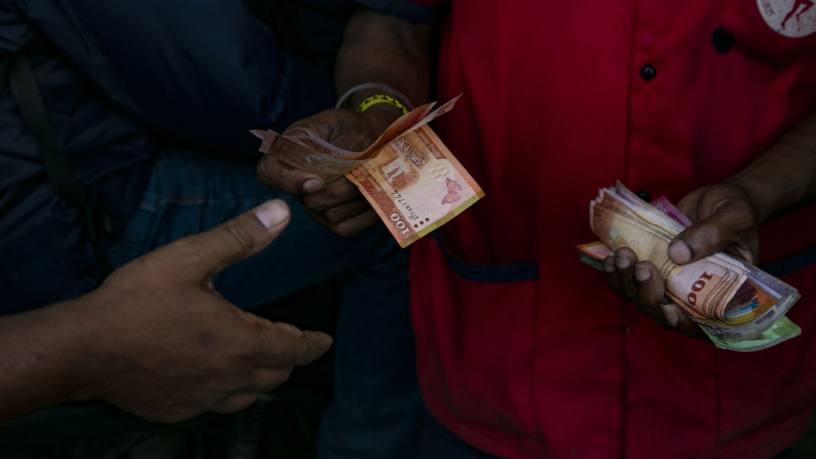Sri Lanka’s economic future hung in the balance as the International Monetary Fund (IMF) reported on its Article IV consultation. A senior IMF official met with Sri Lanka’s finance minister, Basil Rajapaksa*, on March 14 to discuss the fund’s assessment of the country’s economy. In mid-April, the minister plans to travel to Washington DC to present Sri Lanka’s proposal to senior IMF officials, according to a senior aide to the minister.
The government has prepared a detailed plan for the country to emerge from the current economic crisis, which will entail implementing budget proposals under the current national policy framework, ‘Vistas of Prosperity and Splendour’. It has already implemented interest rate increases and floated the local currency ahead of presenting the plan to the international donor agency.
RMP Ratnayake, deputy treasury secretary at the Ministry of Finance, says that the government has already taken steps to tighten monetary and fiscal policy to overcome the current situation. In March, the Central Bank of Sri Lanka (CBSL) raised the Sri Lankan rupee interest rate by 100 basis points and allowed greater exchange rate flexibility. It also resorted to increasing the maximum interest rates on foreign currency deposits of licensed commercial banks.
“Considering the recent monetary policy tightening measures, the expected macroeconomic developments and the prevailing interest rates on foreign currency deposits of licensed banks, the Monetary Board hereby issues an amendment to the Monetary Law Act Order No 03 of 2021 on maximum interest rates on foreign currency deposits of licensed commercial banks and the National Savings Bank, removing the existing maximum interest rate limits imposed on foreign currency deposits of licensed commercial banks and the National Savings Bank,” the CBSL said in a statement.
These changes came after the IMF had concluded its Article IV consultation on February 25 and made recommendations for fiscal consolidation and a flexible exchange rate.
Revenue generation
The Sri Lanka government will also take steps to improve the management of its revenue and also the collection of revenue. Mr Ratnayake adds the government will continue to support the vulnerable and poor sectors in the country, while resorting to curtailing unnecessary expenditure. “We will be looking at ways to cut down leakages in revenue collection and improve revenue collection systems,” he says.
The aide confirms that the government’s plan entails strengthening domestic revenues. “The government will also restructure state-owned enterprises,” they say. “[Importantly], we will not reduce social security networks. On restructuring the Sri Lanka development bond debt, we will not offer a haircut to the creditors, but look for a rollover of the debt and extension of time to repair them.”
According to the aide, the government will also seek the IMF’s assistance to negotiate with multilateral nations on behalf of Sri Lanka and to build confidence in the country. Additionally, the finance minister is to discuss the government’s long-term plan with other stakeholders including the World Bank.
Sri Lanka’s foreign currency reserves fell to $2bn by the end of February. The country must repay $7bn this year to service its external debt of $51bn.
Bilateral help
In a bid to emerge from the crisis, the CBSL is in discussion with bilateral partners and friendly nations for concessions on oil and essential imports. Mr Ratnayake says that the finance ministry is in discussion with around 20 multinational partners to negotiate credit lines.
Sri Lanka has also maintained successful dialogue with other donor agencies, such as the Asian Development Bank (ADB) and the World Bank. For example, ADB president Masatsugu Asakawa met with the Sri Lankan president, Gotabaya Rajapaksa, on March 10 and reaffirmed the ADB’s support for the country’s Covid-19 recovery path. The donor agency has extended cumulative assistance amounting to $11.3bn to Sri Lanka over the years, including both sovereign and non-sovereign projects and programmes.
Similarly, the World Bank-initiated Integrated Connectivity Development Project will soon be supporting new forms of climate resilient infrastructure that will improve market connectivity, enhance supply chains and give better access to services for farmers through public and private investments in agricultural infrastructure and logistics.
*Basil Rajapaksa was removed from his post on April 4.












